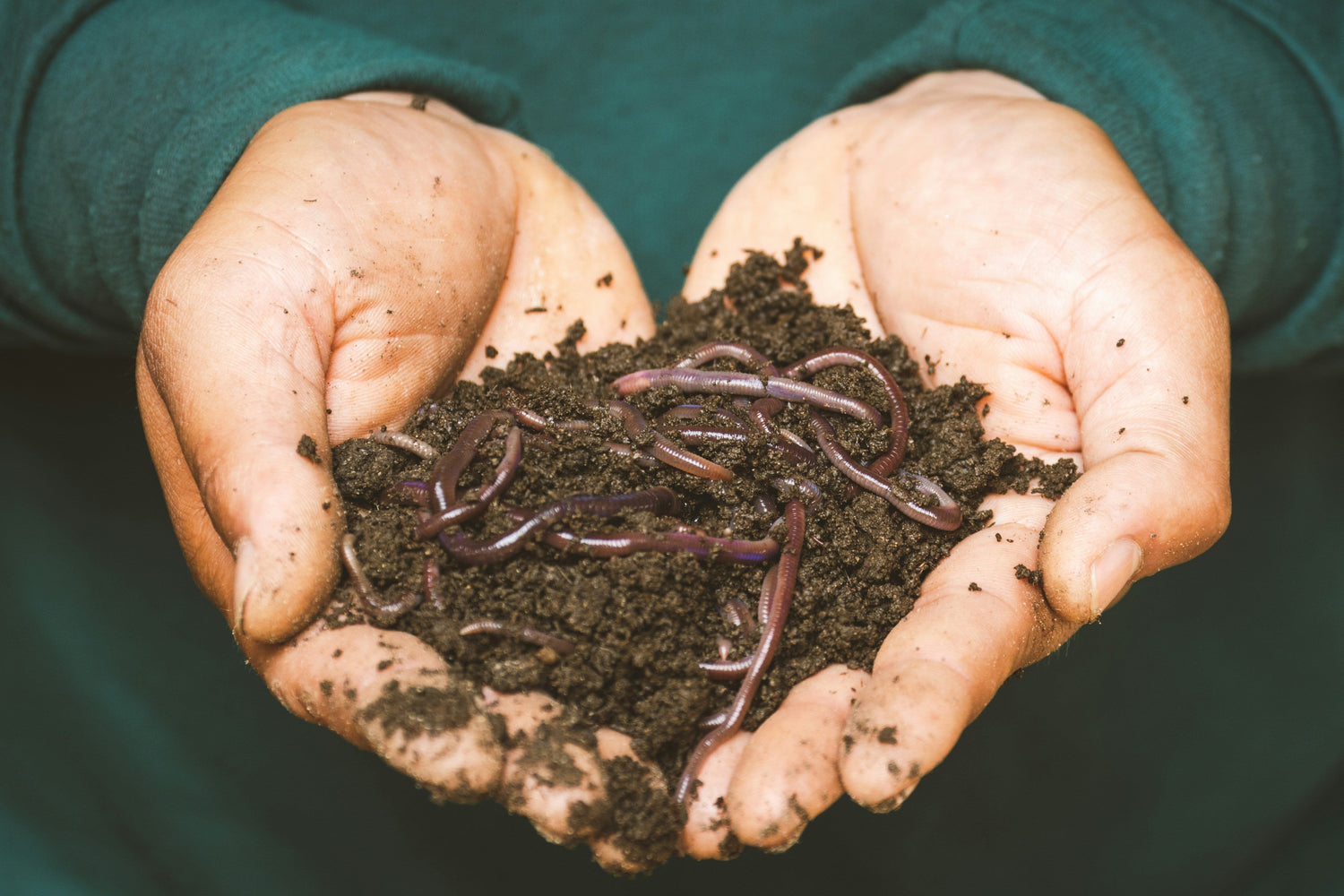Starting Your Worm Composting Adventure: A Decade of Insights
Journey through the history of worm bins, a tradition dating back centuries. Initially used for soil improvement and organic waste reduction, worm composting has evolved into a cornerstone of sustainable agriculture. Ancient civilizations utilized compost worms to enhance their fields, paving the way for modern vermicomposting techniques.
Today, worm composting is celebrated for its environmental impact and role in the circular economy. Repurposing kitchen scraps and garden waste into nutrient-rich compost, this age-old method continues to be an integral part of ecological gardening and waste reduction.
Introduction to Worm Composting Basics
Embark on a rewarding worm composting adventure, where your kitchen and garden waste transforms into nutrient-rich compost. Over ten years, I've immersed myself in the art of worm composting, learning the intricate balance of waste management and soil enrichment. This guide offers a deep dive into worm composting basics, illustrating how to turn organic waste into garden gold.
Worm composting, a sustainable method of recycling food scraps, stands as a beacon of eco-conscious living. By converting food waste and vegetable scraps into worm compost, you not only enrich your potting soil and garden soil but also contribute positively to the environment. Whether you're a beginner or an experienced composter, these insights into worm composting will elevate your gardening game.
Historical Perspective on Worm Bins
Optimizing Your Worm Composting Bin
Your worm composter bin is the heart of your vermicomposting system. A well-designed worm bin, whether a wooden bin or a plastic bin, is essential for successful composting. Factors like size, ventilation, and moisture are critical in determining the efficiency of your worm composting bin.
When setting up your worm bin, consider the material. Wooden bins offer breathability, while plastic bins are durable and easy to maintain. The size should correspond to the amount of food waste and vegetable scraps you plan to compost. A small indoor worm bin is perfect for apartment dwellers, while larger outdoor bins can accommodate more extensive garden waste.
Selecting and Nurturing Your Composting Worms
Choosing the right composting worms is crucial for effective worm composting. Red wigglers and European nightcrawlers are popular choices due to their robust composting abilities. Source your worms from reputable local worm farms or online suppliers, ensuring they are healthy and suited for composting.
Start your worm bin with a pound of worms for each square foot of bin surface area. These red worms will multiply and increase the worm population, enhancing the composting process. Regularly add fresh bedding and food scraps to support their growth and composting efficiency.
Feeding Guidelines: Kitchen Scraps and More
Feeding your worms appropriately is vital. Worms thrive on a diet of kitchen scraps, including fruit and vegetable scraps, coffee grounds, and tea bags. Avoid adding meat scraps, dairy, and oily foods, which can attract fruit flies and cause unpleasant odors.
Gradually increase the amount of food waste as your worm population grows. Chop or shred large pieces of organic material to expedite the composting process. Monitor the bin to ensure there isn't too much food, which can lead to rotting food and excess moisture.
Regular Maintenance and Troubleshooting
Maintaining your worm bin is straightforward but requires vigilance. Regularly check for excess moisture and ensure the bin has adequate aeration to prevent matting. Address any odors or fruit fly issues promptly by adjusting the amount of food waste or adding dry bedding material.
Harvesting and Utilizing Your Finished Worm Compost
Harvesting your finished worm compost is a milestone in the worm composting journey. Once the compost is dark and crumbly, it's ready to be used. Employ the migration method for easy harvesting: add fresh bedding and food to one side, encouraging worms to migrate, leaving behind the finished compost.
Worm castings, the finished worm compost, are a nutrient-rich soil amendment ideal for potting soil, garden beds, and even as compost tea. This nutrient-rich fertilizer enhances soil structure and provides essential nutrients for plant growth.
Advanced Strategies for Worm Composting Enthusiasts
For those looking to further their worm composting knowledge, consider exploring advanced techniques. Experiment with different types of organic waste, adjust the carbon-to-nitrogen ratio in your bin, and try various bin designs for increased efficiency.
Consider expanding your worm composting system to manage larger volumes of food waste. Larger bins or multiple worm composting bins can accommodate more kitchen scraps and garden waste, increasing your compost production.
Community Engagement and Resources
Join the vibrant worm composting community to share experiences and gain insights. Online forums, local gardening clubs, and social media groups are excellent resources for connecting with fellow composting enthusiasts. Participate in local workshops and events to enhance your understanding and skills in worm composting.
Frequently Asked Questions: Addressing Common Concerns
This section tackles frequently asked questions about worm composting. From managing your bin's moisture levels to dealing with seasonal changes, find practical solutions and advice to ensure a thriving composting system.
How Many Worms Do I Need for My Worm Bin?
The number of worms you need depends on the size of your worm bin and the amount of food waste you generate. Generally, it's recommended to start with a pound of worms (about 1,000 red wigglers) for each square foot of bin surface area. This ratio ensures that your worms can efficiently process the food scraps and organic waste you add.
What Should I Feed My Worms?
Your worms will thrive on a diet of kitchen scraps, including fruit and vegetable scraps, coffee grounds, tea bags, and crushed egg shells. Avoid feeding them meat, dairy, oily foods, and citrus fruits, as these can create odors and attract pests like fruit flies. It's also important to chop or shred larger food items to speed up the composting process.
How Do I Control Moisture in My Worm Bin?
Maintaining the right moisture level is crucial for a healthy worm bin. The bedding should feel like a wrung-out sponge. If it's too wet, add dry bedding material like shredded newspaper or cardboard to absorb excess moisture. If it's too dry, lightly mist the bedding with water. Ensure your bin has adequate drainage and avoid overwatering.
How Can I Prevent Fruit Flies and Pests?
To prevent fruit flies and pests, always bury fresh food scraps under the bedding material. Keeping the bin covered and maintaining proper moisture levels also helps. If fruit flies become a problem, create traps using apple cider vinegar and dish soap or temporarily reduce the amount of food you add.
When and How Should I Harvest the Worm Compost?
Worm compost, or worm castings, is usually ready to harvest every few months. You'll know it's time when the compost is dark, crumbly, and has a pleasant earthy smell. To harvest, move all the compost to one side of the bin and add fresh bedding and food to the other side. The worms will migrate to the new food source, making it easier to remove the finished compost.
Can I Use Worm Compost Directly in My Garden?
Absolutely! Worm compost is an excellent, nutrient-rich soil amendment. You can mix it into your garden soil, use it as a top dressing for plants, or brew it into compost tea. It's packed with essential nutrients and beneficial microorganisms that promote healthy plant growth and improve soil structure.
What's the Best Way to Store Finished Worm Compost?
Store finished worm compost in a cool, dry place, ideally in a container that allows some air circulation. It's best used within a few months, as the nutrient content can decrease over time. Ensure the compost stays slightly moist to preserve the beneficial microorganisms.
Do I Need to Add Worms to My Regular Compost Pile?
While it's not necessary to add worms to a regular compost pile, doing so can speed up the composting process. Red wigglers are particularly effective at breaking down organic material in compost piles. However, ensure the conditions are suitable for the worms, as they require a moist and cool environment.
How Do I Know if My Worms are Healthy?
Healthy worms are active and tend to stay within the bedding material. If you notice your worms trying to escape the bin or if there's a noticeable decrease in their activity, it could indicate an issue with the bin's environment, such as improper moisture, pH level, or aeration. Regular checks and maintenance can help keep your worms healthy.
Can Worm Composting Be Done Indoors?
Yes, worm composting can easily be done indoors, making it an excellent option for those without outdoor space. Indoor worm bins are typically small, contained, and odor-free when maintained correctly. Place your bin in a cool, dry area away from direct sunlight, like a basement or under the kitchen sink.
Embrace the Worm Composting Adventure
Worm composting is more than just a gardening practice; it's a commitment to sustainable living. By transforming your kitchen scraps and garden waste into nutrient-rich compost, you contribute to a healthier planet. Start your worm composting adventure today and discover the joys and benefits of turning waste into a valuable resource.
Ready to start your worm composting journey? Meme's Worms is your go-to destination for all your composting needs. From red wigglers to expert advice, we have everything you need to transform your food scraps into nutrient-rich compost. Join our community of eco-conscious gardeners and start your worm composting adventure today!



Leave a comment
All comments are moderated before being published.
This site is protected by reCAPTCHA and the Google Privacy Policy and Terms of Service apply.